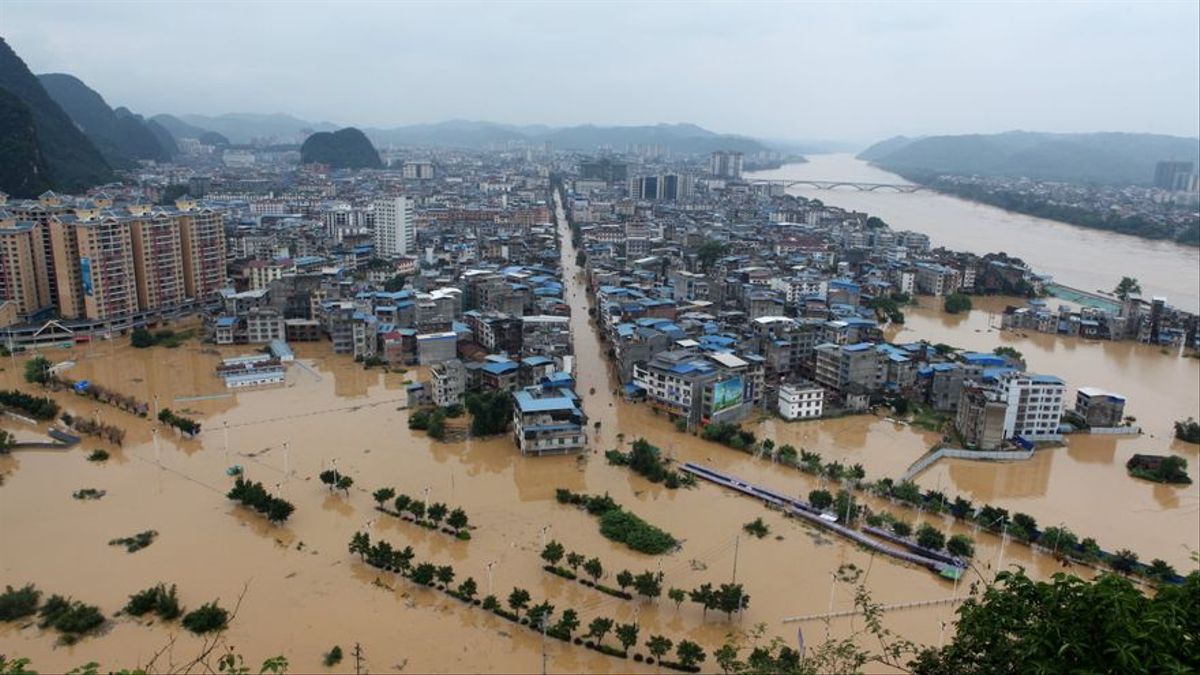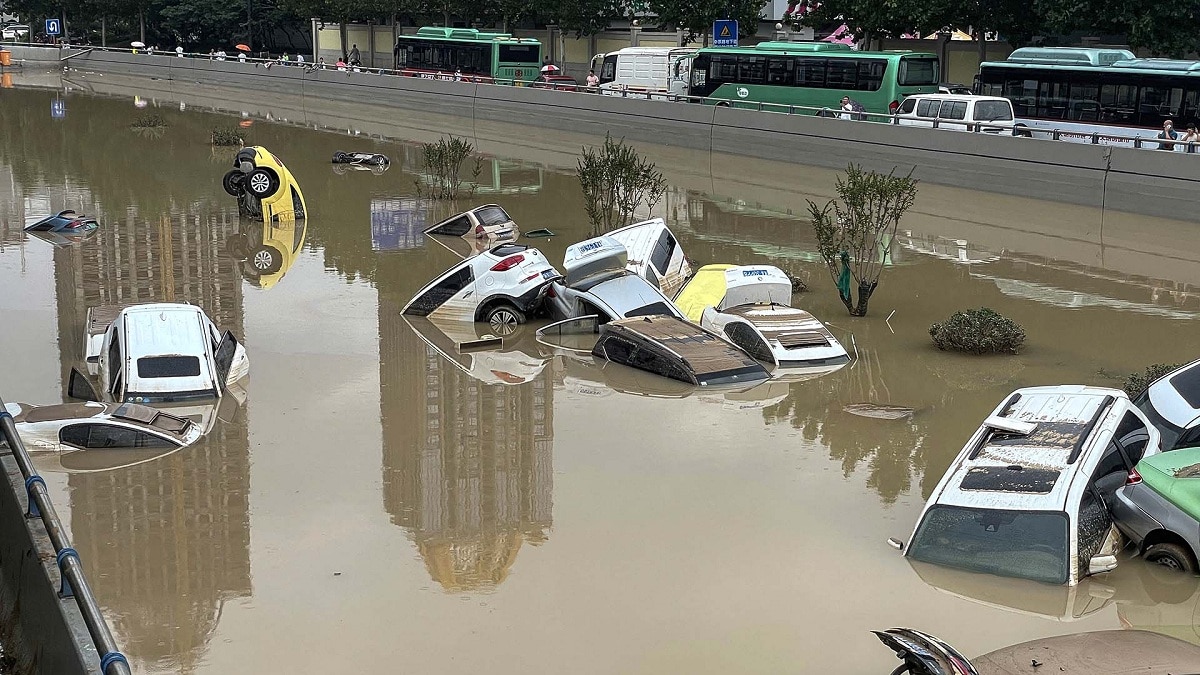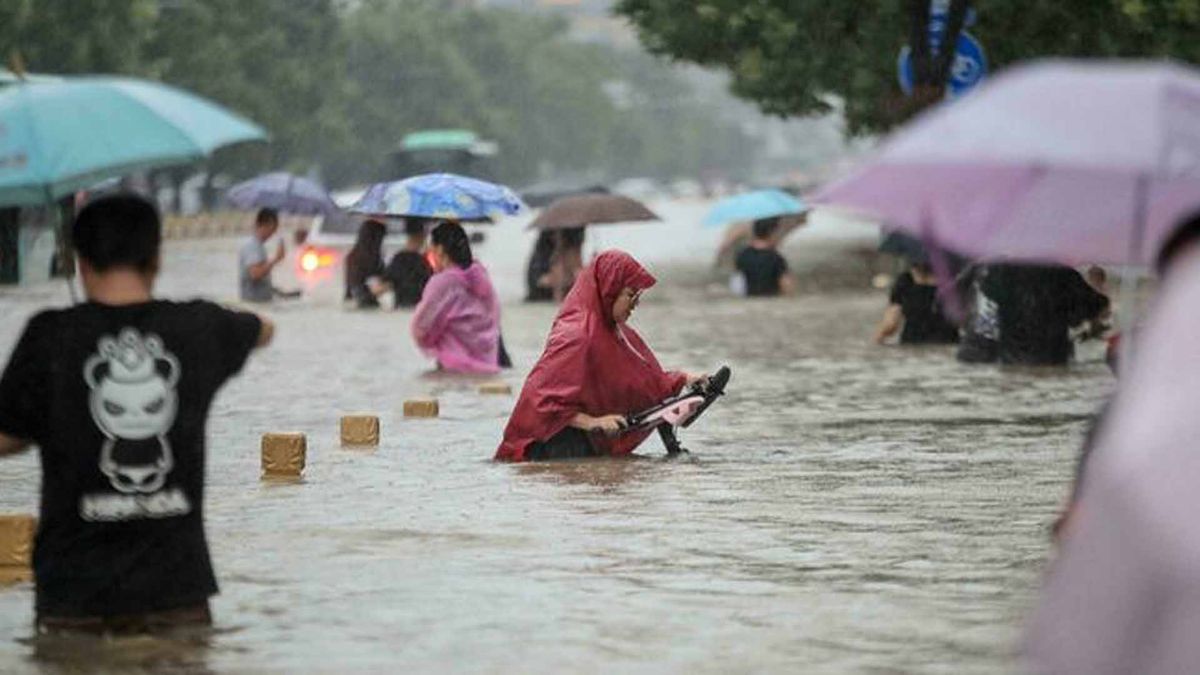
Due to climate change, extreme weather events such as floods are occurring with greater frequency and intensity. The floods in china are increasing dramatically. They have already caused numerous economic damages and caused numerous deaths in recent years. To do this, the Chinese have devised some strategies to be able to stop these deadly floods.
Therefore, we are going to dedicate this article to tell you everything you need to know about the floods in China, the damage they cause and what are the measures and strategies carried out by the government.
Floods in China

The astonishing development of China's urbanization in recent decades, combined with its unique geological and climatic features, has created a deadly mix of urban floods causing millions of victims, hundreds of thousands of deaths and enormous economic losses. A number of measures have been taken to deal with the floods. What are they and what are their results? in the next note.
Since 1949, more than 50 major floods due to storms, typhoons or tides have affected different areas of the Chinese territory. These events led the government to develop prevention plans to minimize human and material losses, reconciling in the process the relationship between floods and socioeconomic development.
History is generous when it comes to flood-related disasters. For example, in 1931, Wuhan was flooded for more than 100 days and a flood left more than 780 people homeless and killed 000. Another catastrophic flood occurred in the Han River basin in 32, killing more than 600 people and submerging the city of Ankang 1983 meters below sea level.
Since 2000, China has experienced major floods at least once every two years. Some of the most notorious cases include the floods of July 2003, when an unprecedented storm hit Nanjing, causing daily rainfall of more than 309 mm - almost double the annual rainfall in central Chile - for hundreds of deaths, plus than 1 million victims.
In July 2007, Chongqing and Jinan were hit by one of the biggest storms in 100 years, killing 103 people, and in 2010, Sichuan left more than 800.000 people homeless and killed 150 people. The data shows that almost 80% of floods do not occur in rural areas, but in cities.
At this time, urbanization experts are well aware that modern cities are not strong enough to withstand heavy rains and say that a "moderate" disaster is likely to delay the development of a city for two decades.
Strategies to avoid floods in China

Urban floods generally cause more damage and affect more people, and the damage and casualties are proportional to the growth rate of the city, so the risks increase each year as urbanization progresses, which is even more worrying if it can be tolerated. Endangering the entire socioeconomic stability of regions inhabited by tens or hundreds of millions of people.
To end this tragic story, in 2003 the Chinese Ministry of Water Resources proposed to the central government to take action on the matter, resulting in a change from an ineffective flood control policy to a flood containment policy.
This has led to the regulation of productive activities in the flood zone, the development of prevention plans and a series of measures to guarantee the safety of the masses. However, it is estimated that 355 of the 642 cities where flood control is the main task -55% - use flood control standards lower than those established by the central government.
In recent years, China has introduced the concept of "risk management" and proposed new policies. Therefore, to move from relying on structural measures to reduce flood damage to balancing structural and non-structural measures, the Ministry of Water Resources developed a National Flood Management Strategy in 2005.
The so-called “China Flood Control Strategy” can be described simply as: the Chinese government decides flood control based on risk, emphasizing non-structural measures, especially administrative, economic, technological and educational (such as centralized decision-making systems , prevention systems, disaster mitigation plans and flood control insurance) and facilitate the implementation of plans to implement structural measures, such as the strengthening of dams, the regulation of river levels and the construction of reservoirs, to achieve full and long-term benefits.
Important points

The three strategic tasks of flood 'management' are:
- Build water conservation projects to reduce disasters effectively. The gigantic Three Gorges Dam project stands out in this project.
- Control human activities to mitigate flood damage in the productive sector.
- Better use of flood water and use of remaining water resources.
To implement this plan, the Chinese government has identified the core of support for scientific and technological progress, ensuring adequate funding and socializing disaster reduction. Finally, using the inevitable urban floods to address water scarcity caused by rapid urbanization is a good example of China's strategy of not only seeking to minimize floods and their negative impacts, but also seeking to profit from these true natural disasters.
Senator Alejandro Navarro said that Chile must follow the example of China, “understood that it must anticipate the forces of nature through a complete strategy that, in addition to building dams and other works, pays attention to educating the population and implemented plans mitigation and other measures. »
The parliamentarian added: «No floods are expected here and there are several evidences of this, like what happened in the Papen Canal a few months ago, where nothing was done to control the water. The rains, which caused the canal to flood and kill. Hundreds of people, first the State must compensate the families and then put a strategy so that this type of misfortune does not happen again ”, he concluded.
I hope that with this information you can learn more about the floods in China and appreciate doing them.